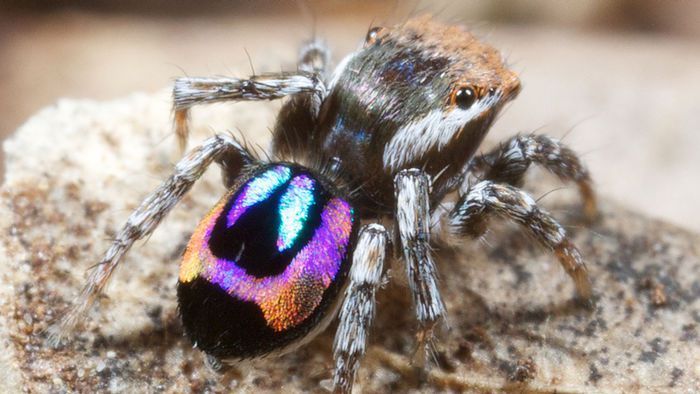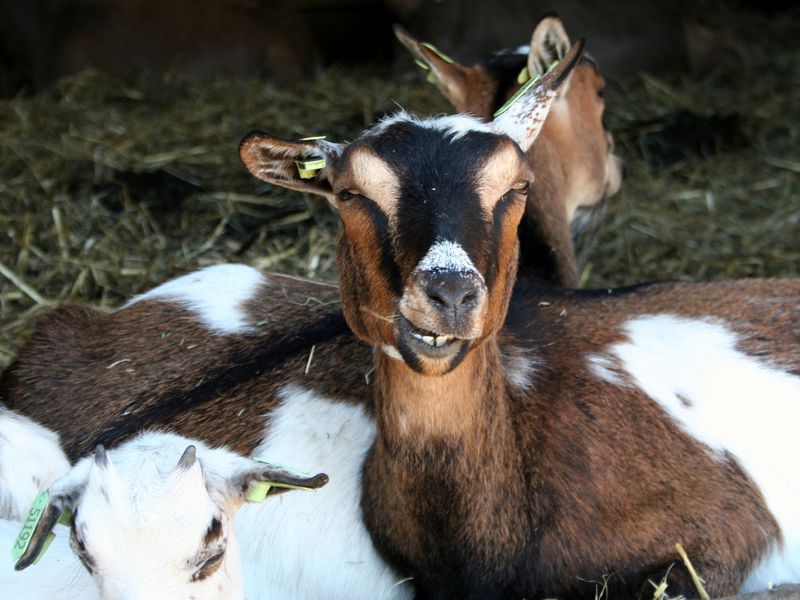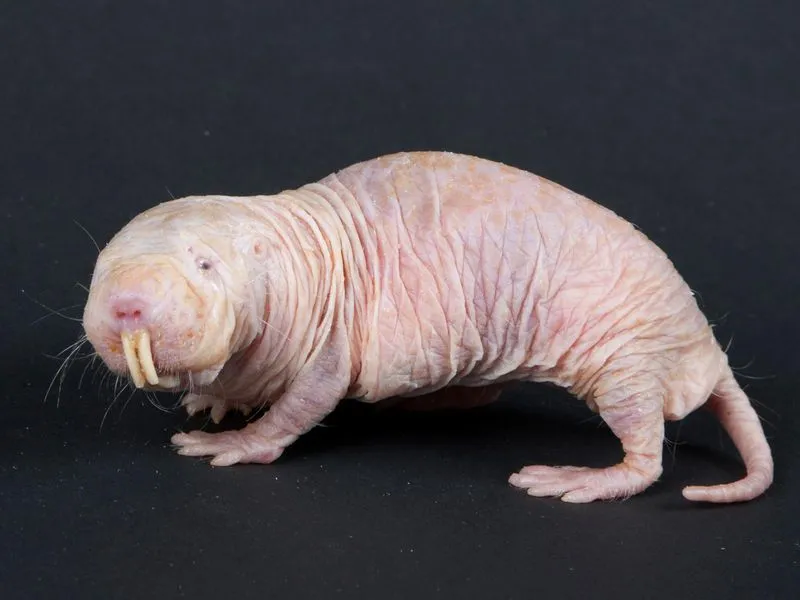Fantastic Things We Learned This Year About Fantastic Beasts of the Real World
The second iteration of the “Fantastic Beasts” movie series comes out this week, but why wait for the movie when you can get a glimpse of the real thing?
/https://tf-cmsv2-smithsonianmag-media.s3.amazonaws.com/filer/a3/5f/a35f3874-88ea-430e-b2cf-135a0b04b9ab/antarctic.jpg)
With advent of the second Fantastic Beasts movie, we get to dive deeper into J.K. Rowling’s wizarding world and all the marvelous creatures it has to offer.
The first movie, Fantastic Beasts and Where to Find Them, followed magizoologist Newt Scamander around 1920s New York City as he fought the powerful dark wizard Gellert Grindelwald and chased down mystical critters that escaped from his enchanted suitcase. In the new sequel, Fantastic Beasts: The Crimes of Grindelwald, we will see Scamander prepare to battle Grindelwald alongside a young Albus Dumbledore. As Scamander gears up for this challenge, surely a wizard like him—who “has never met a monster he couldn’t love”—has plenty more beasts left to show us.
But the muggle world has some pretty fantastic beasts of its own. Scientists are constantly learning about the animals that surround us humans, making surprising discoveries every year. So to get ready for the new movie, here are some of the most fantastic things that science has learned this year about life on Earth—from rainbow-colored peacock spiders to toxic green-blooded lizards.
Peacock Spiders Have Rainbows on Their Thoraxes

Muggles and wizards both fear and love spiders—perhaps more so the former. Rubeus Hagrid, the loyal game and groundskeeper at Hogwarts School of Witchcraft and Wizardy, famously befriended Aragog, a gigantic tarantula-looking Acromantula who lived in the Forbidden Forest.
The rainbow peacock spider, Maratus robinsoni, is certainly not as towering as a 15-foot-tall arachnid, but it’s arguably better looking. The peacock spider has slightly curved scales that readily reflect light off its thorax, creating beautiful, vibrant patterns—more closely resembling the iridescent wings of Scamander’s Swooping Evil than Aragog. These unique arachnids use the colors to entice mates, and their reflective bodies were even studied earlier this year by optical engineers.
Plants Signal Pain—And Fight Back—Like a Bowtruckle Protects Its Tree
Scamander keeps a bough of Bowtruckles, or beady-eyed, stick-like figures, in his suitcase. The twiggy little guys are fierce defenders of the trees they call home, which are often harvested for wands in the wizarding world. When their home tree is harmed, the little sticks get quite aggressive.
We wouldn’t think of most plant life on Earth as aggressive, and certainly not sentient the way humans or even fictional Bowtruckles are. But plants do sense when they’re under attack and send a rippling signal from leaf to leaf, telling each appendage to brace itself. This year, for the first time, scientists illuminated plant sensory networks using a protein that glows green under a microscope.
Each time a leaf was poked, prodded or chomped on by a caterpillar, researchers could literally watch as the plant produced a defense and stress hormone, jasmonic acid, that is believed to activate the “plant’s chemical and physical defenses,” the New York Times reported in September. Now that’s impressive, but the defense mechanism doesn’t quite measure up to the Whomping Willow.
Dogs Have Sensational Sniffers

From Hagrid’s trusty pal Fang to the iconic three-headed, music-loving Fluffy, dogs might just be a wizard’s best friend, too. Canines in the real world, however, have to work pretty doggone hard. Their scent-forward skills are highly sought after, and their ability to assist in search and rescue missions and drug investigations is well-known. But they can also use their olfactory talent to find whale poop for analysis and even sniff out invasive species.
Earlier this year, teams in California used dogs to help find human remains following the devastating wildfires, reports National Geographic. And as one study showed, hounds are successfully able to identify patients with malaria with nothing but their sniffers.
New Bird of Paradise Shows Off Bizarre Dance Skills
There’s no shortage of fantastic birds in the wizarding world.
The brilliant, seismic Thunderbird from the first Fantastic Beasts film helped obliviate, or erase the memories of, muggles in New York with a massive storm. A bright, magenta-hued Fwooper has a high pitched song that can drive people mad, and the cerulean snake-like Occamy can bulk up and shrink as it pleases. And who could forget Dumbledore’s Phoenix named Fawkes that rises from its own ashes?
These magical birds are certainly mighty, but can they dance? Newly discovered and named this year, the Vogelkop superb bird of paradise is unlike other species with its smooth moves and distinct look. When ready to mate, the superb bird fans out a jet black cape adorned with two strikingly turquoise eye-spots and a breastplate that somewhat resembles an agape frown—not to mention these guys have a two-step fit for the Yule Ball.
Moths Drink Bird Tears as Voldemort Drinks Unicorn Blood
Speaking of birds, a Phoenix’s tears have healing powers; they heal Harry Potter’s Basilisk bite in the Chamber of Secrets.
In the real world, bird tears also serve a potent purpose—not for humans, but for moths. Avian tears are protein-packed and sodium-rich, which moths need to survive. But eerie footage of a moth sipping straight from a bird’s eye in the dead of night harkens back to a sinister scene in Harry Potter and the Sorcerer’s Stone, when Voldemort drinks silver blood from a slain unicorn to sustain his threadbare existence.
Harvesting animal excretions isn’t actually that rare of an occurrence in the real world. Blue-hued horseshoe crab blood “plays an essential role in human medicine,” according to NOAA. The blue blood is used in the pharmaceutical industry to test for bacterial toxins in vaccines and other drugs, although it may soon be replaced with a cheaper biotech alternative that doesn’t require draining vital fluids from a living fossil that’s been crawling the Earth for more than 450 million years.
Earn a Goat’s Trust With a Smile And a Hippogriff’s Respect With a Bow

Hippogriffs are handsome magical creatures that resemble a mix between a horse and an eagle, much like the griffins of Greek mythology. Scamander’s mother bred Hippogriffs, so these fantastic beasts were among the first to spark the young wizard’s interest in magizoology. According to Pottermore, hippogriffs are loyal when shown respect, but vicious if respect is lacking. In Harry Potter and The Prisoner of Askaban, we learn that a Hippogriff’s trust can be earned with a bow.
In a slightly less threatening example of similar behavior, researchers studying goats learned that the domesticated farm animals would spend more time around happy-looking humans than angry ones. Last year, the same researchers learned that goats can recognize their friends’ voices.
Bombardier Beetles Secrete Super-Hot Chemicals to Escape From Predators
A small critter shoots 100-degree-Celsius chemicals from its bottom at a rate of 300 to 1,000 times per second in order to trigger a predator’s vomit reflex after its been eaten alive. Magical creature or real beast? This one is as real as they come. Meet the bombardier beetle, which accounts for 649 different species of insect chemical weapons experts.
The wizarding world has a counterpart to this little bugger that is appropriately named the Blast-ended Skrewt. These Skrewts are technically a magical mishap, growing up to six inches long and expelling sparks from their arses.
And yet another real-world critter could give the Skrewt a run for its money. When protecting their nest, the aptly named Colobopsis explodensi ants will clench their muscles so intensely that their skin ruptures, subsequently sacrificing themselves while expelling yellow-ish toxic goo at a predator.
“Headless Chicken Monsters” and Gulping Eels Vs. Grindylows and Nundus

The ocean is the final frontier for finding fantastic beasts, at least on Earth. With more than 80 percent of the seafloor still unmapped and unexplored, scientists continue to discover and photograph striking deep sea creatures for the first time.
Such is the case with the so-called “headless chicken monster,” or Enypniastes eximia, which is a type of elusive sea cucumber known for its likeness to an uncooked rotisserie chicken. These marine creatures also look a bit like the tight-gripped Grindylows, or tentacled sea demons, that attacked Fleur Delacour during the Triwizard Tournament in Harry Potter and The Goblet of Fire.
Sea cucumbers don’t have fingers like Grindylows, but some of E. eximia’s cousins will expel their innards when threatened and then grow new ones. Researchers also got some of the best footage of a gulper eel inflating and deflating its throat earlier this year—similar to a Nundu, a giant lion-like beast of the wizarding world that can make its throat balloon up like the gulper eel and has breath so toxic it can wipe out villages.
Naked Mole Rats Don’t Age, But They Do Eat Poop

Naked mole rats are apparently so bizarre and magical that their chances of dying don’t increase with age. As one researcher notes, their “death is random.” Their risk of death at one year old was the same as it was at 25. These weirdos are also cold-blooded mammals, eat poop to become better mothers, rarely get cancer and can survive without oxygen for 18 minutes.
One creature of the wizarding world, the Murtlap, looks quite similar to a naked mole rat, but even this magical rodent ages with time. The Murtlap is rather odd though—it makes flames come out of its victim’s anus and has a back full of tentacles that wizards pickle to use in elixirs.
These Lizards Evolved Toxic Green Blood

In the world of magic, there’s the Clabbert, a green-skinned hybrid of a monkey and a frog with a red boil on its noggin that glows when it’s in danger. (Some wizards keep them in their pockets to signal the presence of a muggle.) And while it may be hard being a wizard, it’s not that easy bein’ green either.
Puzzling scientists for decades, a group skinks of the genus Prasinohaema that live in New Guinea and the Solomon Islands have evolved to bleed green, the result of high levels of a bodily waste chemical called biliverdin. Normally contained in the liver to discard old blood cells, biliverdin at such high levels in just about any other creature would kill them. And that’s not the only part of this lizard that has it feeling green.
As a researcher tells NPR: “The bones are green, the muscles are green, the tissues are green, the tongue and mucosal lining is green.”
We may not have magical beasts per se, but us muggles do have some pretty fantastic beasts of our own. Fantastic Beasts: The Crimes of Grindelwald premieres this Friday, November 16.
/https://tf-cmsv2-smithsonianmag-media.s3.amazonaws.com/accounts/headshot/rachael.png)





/https://tf-cmsv2-smithsonianmag-media.s3.amazonaws.com/accounts/headshot/rachael.png)